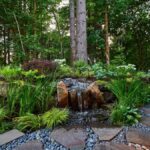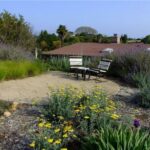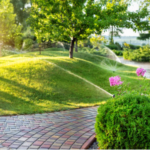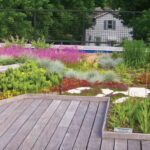Sustainable landscaping is becoming increasingly popular as people recognize the importance of conserving natural resources and protecting the environment. This eco-friendly approach to landscaping focuses on creating beautiful outdoor spaces that are not only aesthetically pleasing, but also environmentally responsible.
One key aspect of sustainable landscaping is water conservation. By using drought-tolerant plants, installing rain barrels, and employing water-efficient irrigation systems, homeowners can significantly reduce their water consumption and minimize their impact on the local water supply. This not only helps to preserve precious water resources, but can also lead to lower water bills for homeowners.
Another important component of sustainable landscaping is soil health. By using organic mulch, compost, and natural fertilizers, homeowners can improve the health of their soil and promote the growth of healthy, thriving plants. Healthy soil is better able to absorb and retain water, reduce erosion, and support a diverse ecosystem of beneficial microorganisms.
Incorporating native plants into the landscape is another key principle of sustainable landscaping. Native plants are well-adapted to the local climate and soil conditions, making them more resilient and less resource-intensive than exotic plants. By choosing native plants, homeowners can create landscapes that require less water, fertilizer, and pesticides, while also providing habitat for local wildlife.
Sustainable landscaping also emphasizes the use of environmentally friendly materials and practices. This includes using recycled or reclaimed materials for hardscaping, such as paths, patios, and retaining walls, as well as choosing energy-efficient outdoor lighting and equipment. By selecting sustainable materials and practices, homeowners can reduce their carbon footprint and minimize waste.
Finally, sustainable landscaping encourages biodiversity and the conservation of wildlife habitats. By creating diverse plantings and incorporating features such as bird feeders, bee hotels, and butterfly gardens, homeowners can attract and support a wide range of beneficial wildlife. This not only adds beauty and interest to the landscape, but also helps to create a balanced ecosystem that is more resilient to pests and diseases.
Overall, sustainable landscaping offers a holistic approach to creating outdoor spaces that are both beautiful and environmentally responsible. By incorporating principles such as water conservation, soil health, native plants, environmentally friendly materials, and biodiversity, homeowners can create landscapes that are not only sustainable, but also provide a host of benefits for the environment and local wildlife.
















